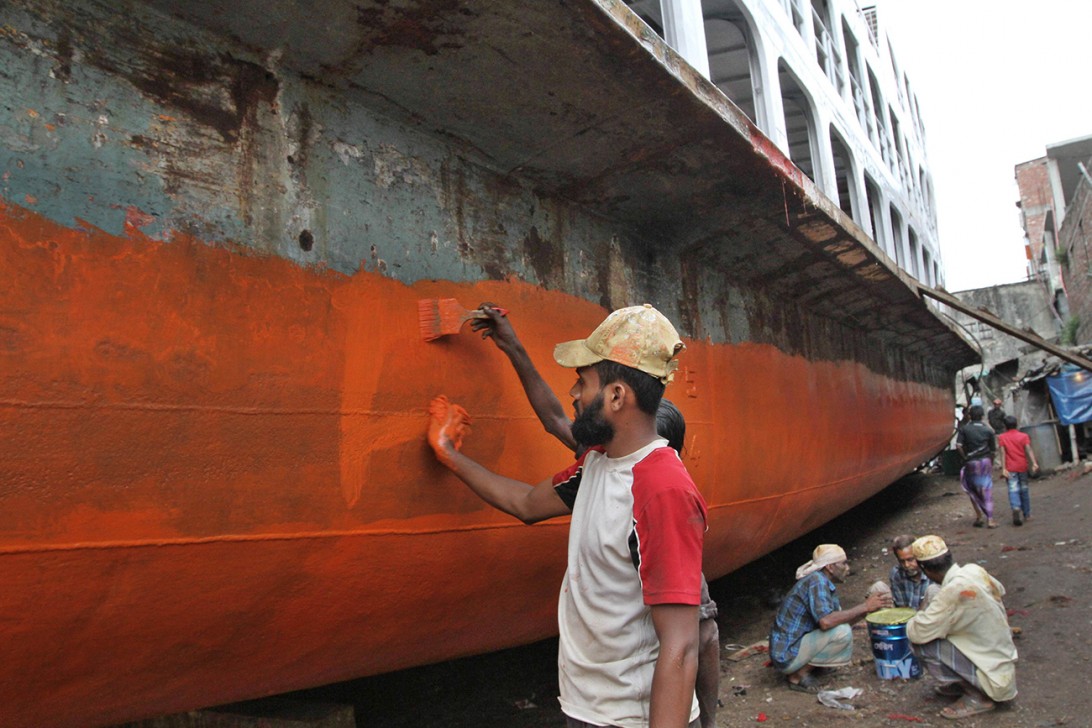Prospects of paint industry

The Asia Pacific region occupies a substantial share in the global paints market thanks to the presence of numerous developing countries, including China, India, Vietnam and Bangladesh, which have been witnessing a surge in investment in the development sector in the recent years.
Manufacturing in the binuclear paint industry of Bangladesh mainly takes place in megacities like Dhaka and Chattogram. This industry has virtually doubled in size over the last 10 years, creating direct employment opportunities for thousands of people while indirectly providing livelihoods to many.
In Bangladesh, the annual consumption of paints currently stands at about 180,000 tonnes. The sector recorded an over 6 percent year-on-year growth in recent times thanks to the rapid urbanisation in a country of around 167.8 million people.
The market blessed with high growth potential and congenial atmosphere has helped paint manufacturers strengthen their foothold in the south Asian country with innovative solutions and services, according to Bangladesh Paint Manufacturers’ Association.
The experts and real estate sector leaders believe local and foreign investments have enabled the paint industry to achieve an annual growth of around 7-8 percent on average.
The Tk 3,700 crore industry in Bangladesh remains highly competitive with the presence of over 45 operational entities. In 2017 alone, the industry contributed over Tk 550 crore to the national exchequer in the form of taxes.
The industry is playing an important role in the infrastructural development of the country by ensuring protection of fixed assets. The protection enabled by paint coatings adds to the longevity of structures, ensuring lesser expenses and thus contributing to the economy.
The sector is expected to grow by 8 to 10 percent per annum as there is scope for increase in consumption backed by economic growth.
Companies are bringing in new types of paints that can be used at hospitals and other colour sensitive areas. Fire retardant paints are even being used to reduce fire related incidents.
Plastic emulsion, distemper, weatherproof exterior coat and synthetic enamel are the key products that hold the major market share. Plastic emulsion and distemper are close substitutes of each other. The emulsion is basically used in high-end residences all over the country and distempers are economy class products generating demand in semi-urban and rural markets.
The development in the real estate sector, gradual increase in consumer awareness about the need for protection of houses and increasing urbanisation fuelled the growth of the paint industry.
The availability of house loans and a shift from semi-permanent to permanent housing structure, a progress in shipbuilding industry and consistent economic growth are the other catalysts for such a growth.
However, the spiralling prices of raw materials in international markets, depreciation of the local currency and new supplementary duties have slowed down the sector’s growth to a great extent in recent times.
Five percent supplementary duty has been imposed on painting products, which is generally, applied on luxury and non-essential goods or socially undesirable goods, or the goods that are not justified in public interest.
On top of that, excessive land prices are also restricting the urban market’s growth, as around 80 percent of the housing sector cost is related to land price.
If the housing sector does not grow, it will affect paint and other building materials industry. In semi-urban/rural cities, the housing sector is expanding at a faster pace. However, the usage of quality paints is lower in those areas.
Moreover, compared to our total population, the ratio of people to number of households is quite low compared to other countries around the world. This negatively impacts not only the paint industry but also the housing and other raw materials industry.
The paint companies are finding it difficult to survive because of the rising prices of raw materials and a decline in paint consumption in the real estate sector.
If the trend continues, the industry may suffer negative growth and many paint manufacturing companies will be forced to shut down, causing massive unemployment and ultimately inflicting losses on the national economy.
The paint industry not only employs many people but is also a source of income for hundreds of suppliers and service providers whose businesses will suffer as well. For example, Berger employs over 1,000 people and has a countrywide distribution network of more than 3,000 dealers.
However, it also indirectly contributes to lives of over hundreds of thousands of architects, interior designers, paint contractors, paint applicators and shopkeepers.
Therefore, the government should take some measures such as withdrawal or a cut in supplementary duty on paints and related products to help the sector flourish further.
The silver lining for paint industry is rapid industrialisation which will open the market to tech-driven and high-end products.
On the other hand, if supplementary duty remains high, local production of specialised products will remain costly. The market will have to resort to imported products which will ultimately harm local production.
We hope and believe the lawmakers will take timely steps to help the industry keep growing.
The writer is the managing director of Berger Paints Bangladesh.
